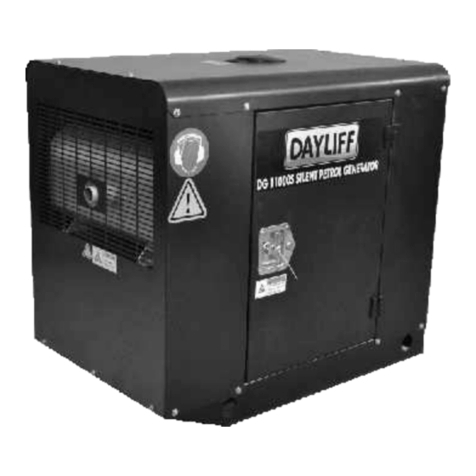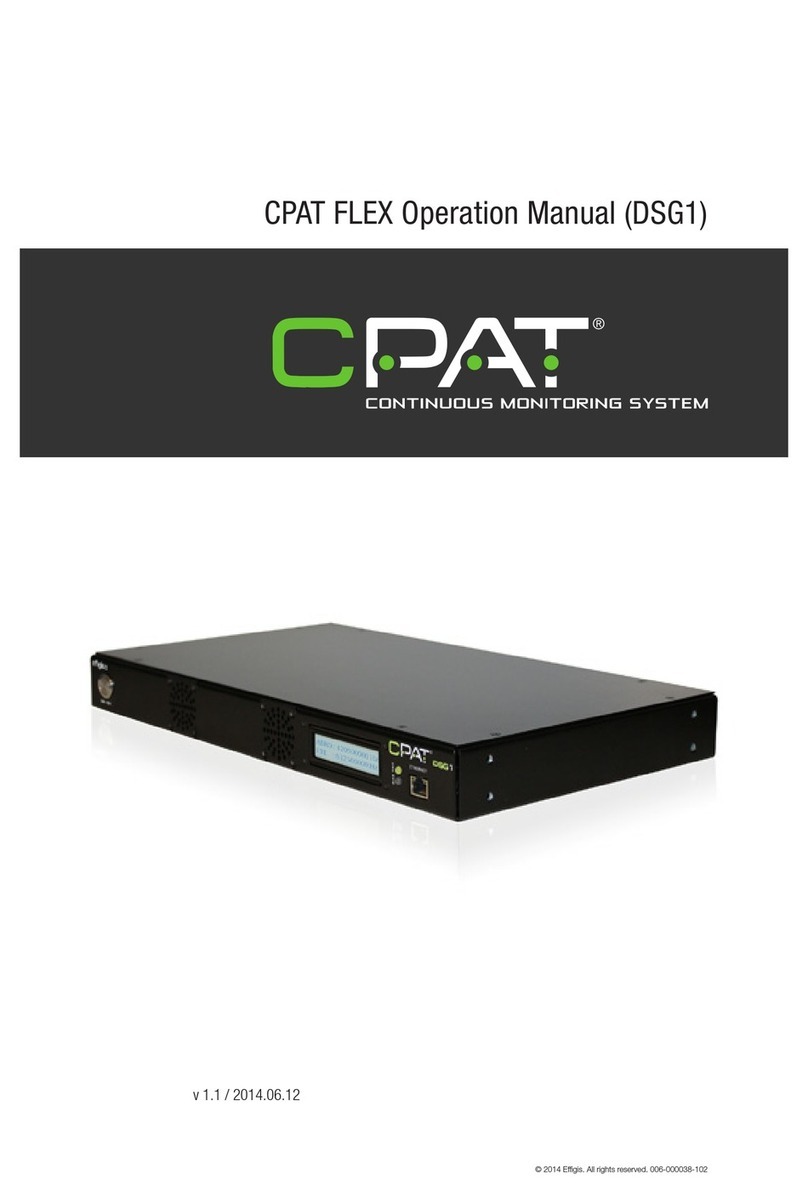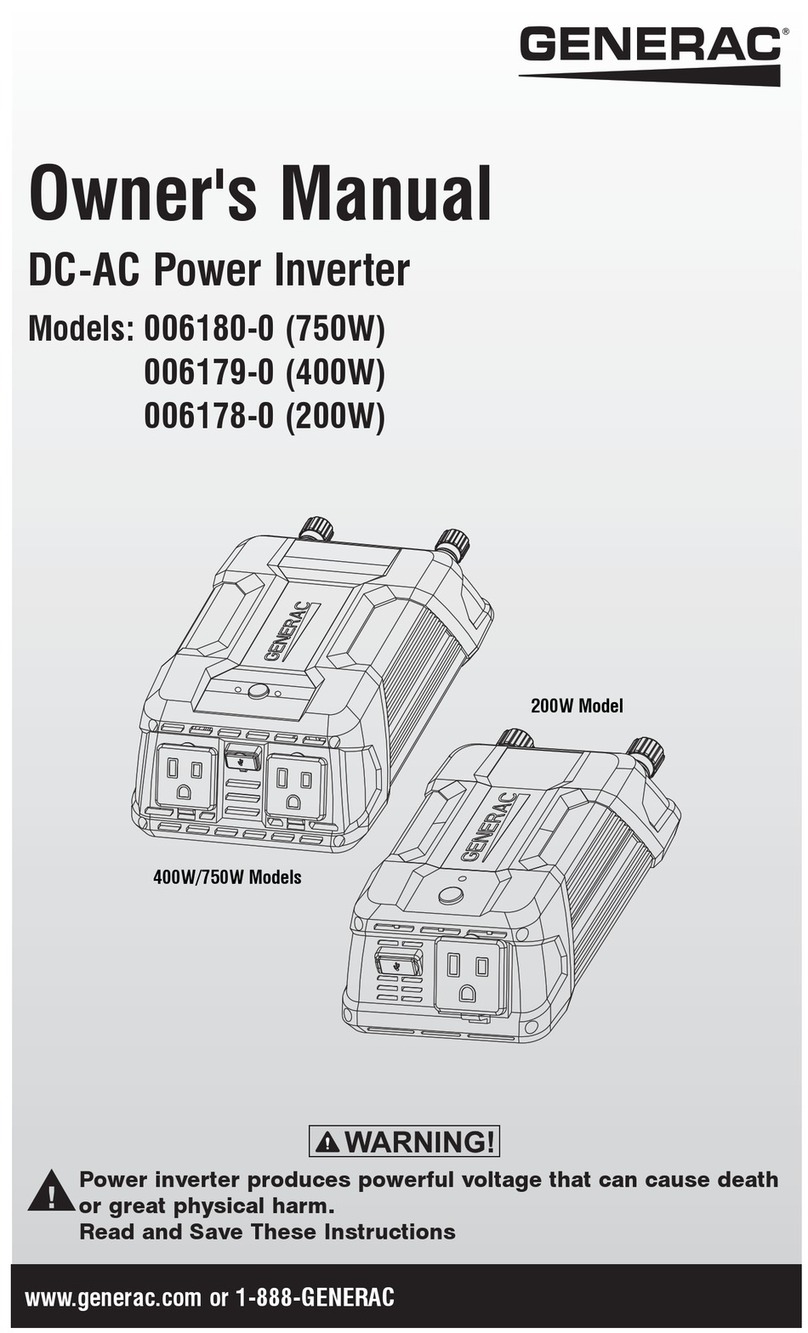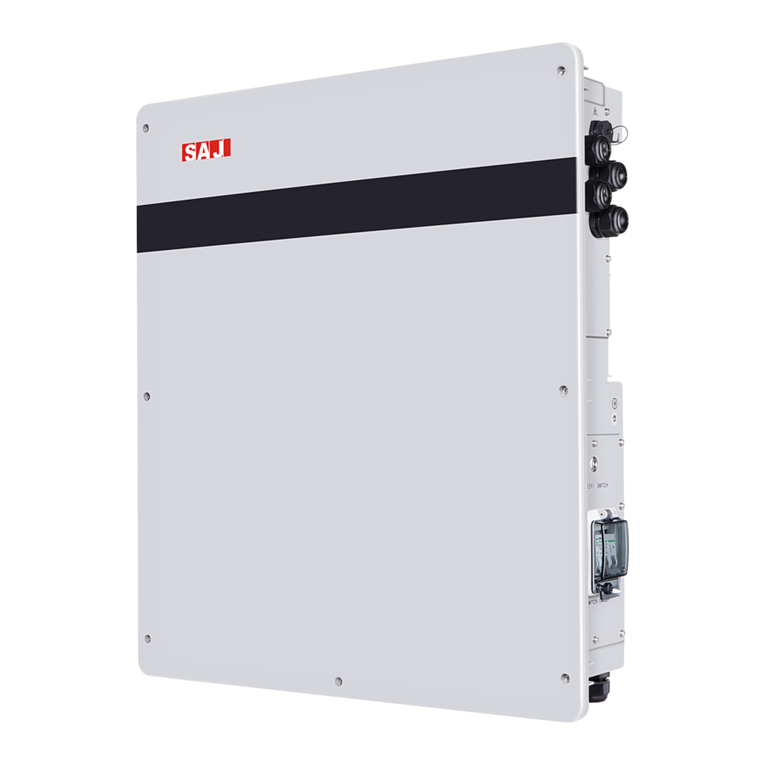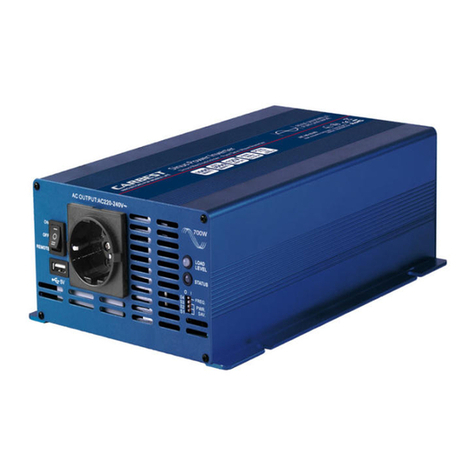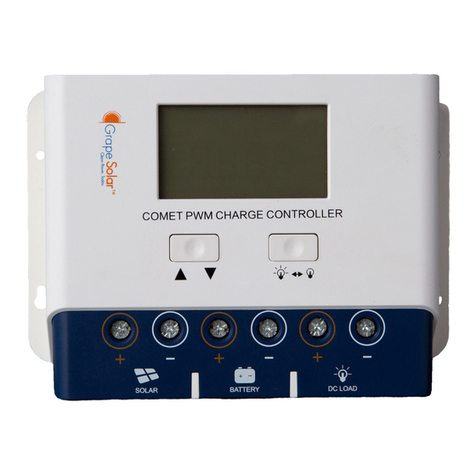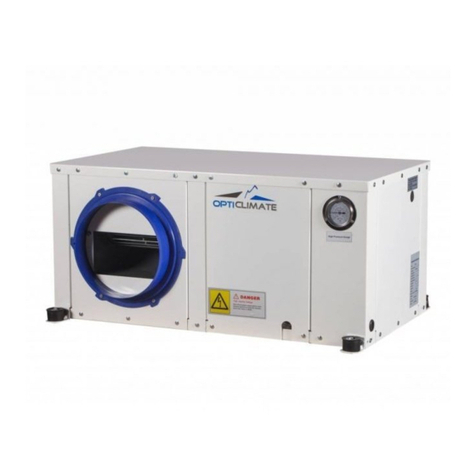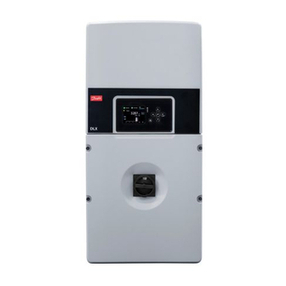DAYLIFF SUNFLO-S 150 Installation instructions

Installation &
Operating Manual
SOLAR PUMPING SYSTEMS


INDEX
© Davis & Shirtliff Ltd 2020
Contents herein are not warranted
SPECIFICATIONS
1.
1
2.
EQUIPMENT INSTALLATION 2
2.1 Module Positioning
1.1 Pump
2
1
2.2 Pump Installation
1.2 Power Outputs
3
1
2.3 Electrical Wiring
1.3 Pump Data
4
2
2.4 Low Water Level Protection 7
4. SYSTEM OPERATIONS 8
2.5 High Water Level Tank Sensor 7
4.2 Controller 8
4.1 Pump 8
5. TROUBLE SHOOTING 11
6. TERMS OF WARRANTY 12
3. BATTERY SYSTEMS 7
4.2.1 Suno-S 8
4.2.2 Suno-A 9
4.2.3 Suno-B 9

1
1. SPECIFICATIONS
Congratulations on selecting a Dayliff SunFlo Solar Pumping System.
They are manufactured to the highest standards and if installed and
operated correctly will give many years of efcient and trouble free
service. Careful reading of this Installation Manual is therefore
important, though should there be any queries they should be
referred to the equipment supplier.
1.1 PUMP
Solar Pumping Systems are available with several pump options as follows:-
SunFlo-S: Pumps are of positive displacement three-chamber diaphragm design and
can run dry without damage. An internal by-pass is incorporated to prevent damage in the
event of delivery cut-off.
Pump components are manufactured from high quality engineering plastic with
santoprene used for the diaphragm and EPDM for the valves. Casings are plastic for the
150 and stainless steel for the 300.
PV connection is either direct or through a charge controller that is connected to a battery
for 24hrs operation.
SunFlo- A: Pumps are of rotary screw design, the screw being made of stainless steel with
a rubber stator. They feature an in-built controller for starting and running the pump which
incorporates over and under current and voltage protection.
SunFlo-B: Pumps are of either rotary screw or centrifugal design depending upon model.
Material of construction for rotary screw design is stainless steel screw with rubber stator
while centrifugal pumps feature noryl impellers and stainless steel chambers.
Pumps are supplied with a self-contained multifunction MPPT (Maximum Power Point
Tracking) controller that provides high efficiency output, typically +25% higher than
conventional pumps of a similar water output. The controller also protects for over current,
over and under voltage and low water level (with provided electrode) and features
indicator lights that give the pump's operating status. The system can be optionally
installed with batteries so the pump operates when there is insufficient solar irradiation.
1.2 POWER OUTPUTS
2
Typical performance figures are given at standard test conditions of 1000W/m solar
0
irradiance and 25 C. Output will vary throughout the year depending upon prevailing
irradiation levels. For indicative purposes, factors of 1.1 can be applied for hot arid areas
and 0.9 for temperate high altitude areas in East Africa. Output will vary throughout the
day as a proportion of the estimated hourly irradiation as shown in Graph 2.

2
2. EQUIPMENT INSTALLATION
Before commencing installation check all systems components that should include the
pump with cable, safety rope, DC Isolator, controller (if applicable), supply cable for PV
module array to pump controller/isolator, pipe fittings and PV solar modules.
Also required will be the necessary length of piping, surface pipe fittings and module
support which is not included in the systems but is available from the pump supplier on
request.
2
Average Daily Irradiation Values (Kwhr/m)
Graph 1
Jan Feb Mar Apr May Jun Jul Aug Sep 11
Oct Nov Dec
5.6
6.3 6.5
6.0 5.8 5.6 5.7 5.9
6.5
5.8
5.1 5.3
% Daily Output
Graph 2
6 7 8 9 10 12 13 14 15 16 17 18
Time (hrs)
13.5%
7%
10%
12%
13% 13%
12%
10%
7%
0%
2% 2%
0%
1.3 PUMP DATA
SunFlo-A
SunFlo-S
SunFlo-B
H
104mm
13.8mm
H
SUNFLO-S 150
SUNFLO-S 300
SUNFLO-A 150H
SUNFLO-A 270H
SUNFLO-A 600H
SUNFLO-B 120H
SUNFLO-B 500C
SUNFLO-B 1000C
1m /day at 30m
3
3m /day at 60m
3
2m /day at 30m
3
3m /day at 50m
3
4m /day at 70m
3
3m /day at 30m
3
3
6 4m /day at 0m
12m /day at 70m
3
12024
30024
15024
27036
60048
12024
50048
1000110
Pump Model Indicative
Performance
24 1x200W
2x200W
1x200W
2x200W
4x200W
1x200W
4x200W
8x200W
60m
50m
70m
30m
40m
70m
30m
30m
½”
¾”
1”
1¼”
Outlet
Size
Cable
length,
2
2.5mm
PV
Modules
Peak
Voltage
(V)
Motor
Rating
Watts
Open
Circuit
Voltage
(VoC)
≥20
≥30
≤50
≤50
≤100
≤125
≤200
≥30
≥60
≥112
Input
Voltage
(V)
≤60

3
0
The PV module array should be positioned ideally on an East-West axis at 15 from the
horizontal facing North in the Southern hemisphere and South in the Northern
hemisphere. It is essential that modules are fully exposed to direct sunlight as any shading
will greatly reduce performance.
PV modules are light and simple to fix, frame mounting being recommended. This can be
sited either on a roof or on a ground structure. Frames are available on request.
2.2 PUMP INSTALLATION
For borehole installations it is important to ensure adequate
water availability as damage can occur in the event of dry
running. This should be checked from the Driller's report if
available or by careful testing during commissioning.
WARNING
Pumps can be installed in wells or boreholes and should be provided with fittings as
indicated in Fig1. Piping options are Dayliff PVC for deep wells, galvanized steel or HDPE.
The latter is recommended for shallower wells due to simplified lowering. When installing
the pump ensure to fit the safety rope which can be used to lower the pump down. The rope
should be secured at the well head.
When lowering, it is recommended that the drop cable, electrode cable (if fitted) and rope
are secured to the drop pipe by the tape provided and are not left loose.
ŸA wide range of pump models are available and the pump selected must be matched
to the well/borehole output to provide optimal operating performance. This should
be done with reference to the borehole drillers report in consultation with a borehole
installation specialist where applicable. As a rule pump output should not exceed
65% of maximum tested borehole yield.
ŸMinimum Borehole Diameter 3”pumps-84mm, 4” pumps-110mm.
ŸMaximum Pump Immersion Depth SunFlo-S- 30m, SunFlo-A/B - 20m.
ŸPumped liquid should be clean, thin and non-explosive containing no solid particles
or fibres. Sand content should not exceed 50gm/m or else pump life will be reduced
and any warranties will be invalidated .
0
ŸLiquid temperature should not exceed 40 C in order to preserve rubber components.
ŸPumps can be installed either vertically or at an angle, though if installed at an angle
0
the discharge outlet should never fall below 10 to the horizontal plane as shown in
Fig. 2. For all angled installations a flow sleeve should be used with a minimum of
0.5m water depth above the pump to prevent the formation of a vortex.
2.1 MODULE POSITIONING
When positioning the PV Modules avoid all shade .
WARNING

Fig. 2 Pump Axis Limits
Allowed
Not
Allowed
0
Min 10
2.3 ELECTRICAL WIRING
Cover modules during connection to avoid electric shocks,
Connections should be done in the early morning or late
afternoon when irradiation is low.
WARNINGWARNING
4
Fig. 1 Pump Installation Arrangement
Ensure input power is isolated before wiring and connection
WARNINGWARNING
WARNING
Ensure secure earth grounding of the system to avoid
dangerous power surges.
WARNINGWARNING
Ensure tight cable connections as loose connections are the
most common source of system failures.
WARNINGWARNING
Ensure that the Isolator and Controller are mounted adjacent
and close to the PV module array. Distance between controller
and PV module should not exceed 10m or pump performance
will be impaired. They must be well protected from rain and
weather.
WARNINGWARNING
Electrical connection should be carried out by an authorized
Electrician in accordance with local regulations.
Rope
Pressure Gauge
Cable
Outlet
Check
Valve
Ball
Valve

Modules should be wired as per the arrangement shown in Fig. 3,4 & 5 depending on
system. Note most systems are series connected +ve to -ve terminals, though larger
systems include parallel arrays. All module cables should be firmly connected with the
provided plugs to avoid short circuits.
The module connection cable should be connected to the PV Isolator that is provided with
MCB overload protection. All wiring connections should be made with the isolator 'off'.
5
SunFlo-S System Layout
Fig.3
SunFlo-A System Layout
Fig.4
SunFlo-S 150 - 1 PV MODULE
SunFlo-S 300 - 2 PV MODULES
DC Isolator
Outlet
Batteries
PV MODULES
Charge
Controllers
PV MODULES
DC ISOLATOR
OUTLET
MODULE CONNECTIONS
SunFlo-A 150H - 1 PV MODULE
SunFlo-A 270H - 2 PV MODULES
SunFlo-A 600H - 4 PV MODULES

6
SunFlo-B System Layout
SunFlo-B Controller Connection
Fig.5
Fig.6
Solar Battery
L1 L2 L3
Motor
Tank Well
COM2
Solar Panel
Battery
TH WH
COM1
Water Pipe
Electronic water
level sensor
Well
PV MODULES
MODULES CONNECTIONS
DC ISOLATOR
OUTLET
MPPT PUMP CONTROLLER
SunFlo-B 120H - 1 PV MODULE
SunFlo-B 500C - 4 PV MODULES
SunFlo-B 1000C - 8 PV MODULES

When provided, separate Controllers should be located adjacent to the Isolator and care
taken to ensure correct connections to the terminal block. The controller isolator must be
'off' during connections.
2.4 LOW WATER LEVEL PROTECTION
7
Water level sensors are unnecessary when there is no risk of
draw down to the pump.
CAUTION
The total length of cable used for water level sensors should not
exceed 200m.
CAUTION
The water level sensor should be installed not less than 100mm
above the pump suction.
CAUTION
2.5 HIGH WATER LEVEL TANK SENSOR
A high level sensor is also provided that can be used to control the pump when the
pump output is delivered to a high level tank. In the event of this being fitted it should
be connected to the terminals as shown in Fig 6 and also the timer delay controlled by
Switch B must be set to approx. 20 mins.
SunFlo-A
A paddle type float switch is provided on the main pump cable that is suitable for large
diameter well installation where there is sufficient space for paddle operation.
If installed in a borehole the paddle should be removed by cutting the cable and the
three cable ends bared, joined together and bound by insulation tape to the main
drop cable. Care should be taken to ensure a tight connection so the switch leads are
in closed circuit.
SunFlo-B
A separate level probe is provided that should be connected to the Controller as
indicated. When fitted it is important to set the timer delay on Switch B (see section
4.2) to protect the pump from cycling as the water level rises. When no low level
sensor is fitted terminal COM1 and WH should be directly connected with a looped
cable.
3. BATTERY SYSTEMS
SunFlo-S and SunFlo-B installations can be provided with auxiliary batteries to
provide extended pump operation. Batteries must be connected through the
controller provided to the terminals indicated. They should not be connected directly
to the pump. Batteries should be sized according to the table below:

8
Pump Power,
Watts
120
Pump
Voltage
Battery Capacity Series Connection
300
500
24
24
48
2No. 18Ah/12V
2No. 35Ah/12V
4No. 35Ah/12V
2No. 35Ah/12V
2No. 100Ah/12V
4No. 100Ah/12V
4. SYSTEM OPERATIONS
4.1 PUMP
Generally pump operation is fully automatic with pump flow starting with low output at
around 8am building to a peak at mid-day and stopping around 5pm. Output will vary
with conditions with low output during rainy or clouded periods. Equipment is water
lubricated and requires no maintenance though periodically it is important to clean the
module surface of dust and debris and check the installation for damage.
4.2 CONTROLLER
4.2.1 SunFlo-S
For battery operated systems a charge controller (supplied in the system) is required. The
controller must not be used for systems without batteries as performance will be impaired.
Charge controllers are fitted with LED indicators for fault, battery and working status;
automatic 12/24 identification, overload protection and anti-reverse protection.
Units
PV
BAT
LOAD
Battery
Charging
at daytime
Load
LCD Icon Indicated Item
Solar Panel Parameter
Status
Output
Parameter
Indicator
Charge Controller Display
Battery Parameter
Load discharging
Parameter
Daytime or Charging
Night recognition
Load short-circuit or
overload
Load turned on
Load turned off
Battery in normal state
Over discharge
Over voltage
Steady on
Steady on
Steady on
Steady on
Steady off
Quick Flashing
Steady on
Steady off
All lighting up
Only the frame flashing
The frame and 3 dashes
all flashing
2hrs 5hrs

Indicator Lights
Label Denition Instruction
SYS
Pump
MPPT
ERR_I
LOW_POWER
Tank_F
WELL_L
System
Power
Pump running
Maximum
Power Point
Tracking
Current
Error
Voltage
Error
Tank Water
Level Alarm
Well Water
Level Alarm
Solar Mode: Indicator light is always on (not battery mode)
Battery Mode: Green indicator light blinking
Green indicator light will turn on after the pump starts running
Green light, monitor the power input from the solar arrays and adjust the
voltage and current to gain the highest performance from the pump
Red light is always on: Overload error
Red light blinking : Over current error :
Yellow light continuously on indicates the system voltage is too low
Green light, the tank is full
Green light, the well is empty
If the light is blinking, system is in time-delay mode
9
4.2.2 SunFlo-A
Pumps are controlled by an internal motor controller with no external monitoring or
adjustment provisions. However, pumps must be connected through the PV Isolator that
also provides over-current protection.
4.2.3 SunFlo-B
All SunFlo-B pumps are provided with an advanced MPPT controller that enhances pump
performance by up to 25%. The controller includes an isolator switch, protection from
over/under voltage, overcurrent, low level control (optional), indicator lights for pump
operating status and provision for high level floatswitch.

10
No Indicator Lights System Status
1
2
3
All the indicator lights blink once
‘SYS’ Blinking
‘SYS + Pump + MPPT’ Blinking System starts charging mode
System in self-check mode
System powered
Time delay
Speed button
Solar battery diverter switch
Speed Control – Modulates the pump speed by regulating pump efficiency. Turn fully
clockwise for 100% efficiency and fully anti-clockwise for minimum 30% efficiency. This
function allows PV module output to be shared between the pump and battery charging
according to the set proportion and for reduced pump output in the event of over-
pumping. For full output pump operation it should be set to 100% efficiency.
Speed Time Delay – Controls the delay on the low level cut-out re-start with up to
30mins delay being available. The WELL indicator will blink when the delay is activated. If
no delay is required the control should be set to '0', the recommended setting unless the
well has very poor output.
Solar/Battery Mode Selector Switch – A three position switch that selects solar
operation, system isolation or battery operation.
When operating in 'Solar' mode all power from the PV modules will be used for the pump
operation and the battery will be isolated. For non-battery systems the switch should
always be in this position
When operating in 'Battery' mode the system will be powered by hybrid battery/PV module
output according to power available and the battery is charged by surplus PV module
output controlled by the Speed Control. Also when there is insufficient irradiation the
charged battery will power the pump.
Controls

11
For SunFlo-B pump
shutdown with red
LED ON for ERR_1
Clean all solids or sand out of the pump
and reset by switching the pump OFF
then ON again
Motor or pump is blocked and very hard
to turn
Check the PV array is facing the sun and
remove any shading. Otherwise wait for
optimum sunshine conditions
Low irradiation
Check and correct wiring
Incorrect wire connections
Check controller wiring is well done
Inspect the controller for any burnt parts
and repair/replace
Check earthing connections are well
done
For SunFlo-B pump
shutdown with red
LED ON for
LOW_POWER
Insufficient power reaching the controller.
A solar-direct (non-battery) system should
start once there is sufficient sunshine
Low voltage on the system which is
insufficient to power the pump
A battery system should start if the battery
supply voltage is higher than what the
pump requires
If the pump was recently connected (or
reconnected) to the controller, it may be
running in reverse direction due to wiring
error
Check power supplyIncorrect power supply
Incorrect wire connections
Pump will not
operate
Insufficient sunshine
Check for tripped MCB & reset
Check electrical wiring
Check for corrosion and looseness and
correct
Wait for sufficient sunshine conditions
PROBLEM POSSIBLE CAUSE SOLUTION
Check solar irradiationLow voltage
No water at pump level
Pump operates with
no flow or reduced
flow
5. TROUBLE SHOOTING
Pump located too deep
Clogged filter screen
Water flow restricted
Loose connections or punctured hose
Remove filter screen and rinse
Check for crimped hose or blocked pipes
Check hose clamps or replace hose
Ensure the pump is installed below
the lowest water level
Correct installation to the recommended
level

6. TERMS OF WARRANTY
i) General Liability
ii) Standard Warranty
ŸIn lieu of any warranty, condition or liability implied by law, the liability of Dayliff in
respect of any defect or failure of equipment supplied is limited to making good by
replacement or repair (at the Company’s discretion) defects which under proper use
appear therein and arise solely from faulty design, materials or workmanship within a
specified period. This period commences immediately after the equipment has
been delivered to the customer and at its termination all liability ceases. Also the
warranty period will be assessed on the basis of the date that the Company is
informed of the failure.
ŸThe warranty applies solely to equipment supplied and no claim for
consequential damages, however arising, will be entertained. Also the warranty
specifically excluded defects caused by fair wear and tear, the effects of careless
handling, lack of maintenance, faulty installation, incompetence on part of the
equipment user, Acts of God or any other cause beyond the Company’s reasonable
control. Also, any repair or attempt at repair carried out by any other party invalidates
all warranties.
If equipment failure occurs in the normal course of service having been competently
installed and when operating within its specified duty limits warranty will be provided as
follows:-
ŸUp to one year - The item will be replaced or repaired at no charge.
ŸOver 1 year, less than two years - The item will be replaced or repaired at a
cost to the customer of 50% of the Davis & Shirtliff market price.
The warranty on equipment supplied or installed by others is conditional upon the
defective unit being promptly returned free to a Davis & Shirtliff ofce and collected
thereafter when repaired. No element of site repair is included in the warranty and any site
attendance costs will be payable in full at standard charge out rates. Also proof of
purchase including the purchase invoice must be provided for a warranty claim to be
considered.
12

INS420A-05/19
www.davisandshirtliff.com
This manual suits for next models
7
Table of contents
Other DAYLIFF Inverter manuals
Popular Inverter manuals by other brands

AIMS Power
AIMS Power PE200012230S user manual
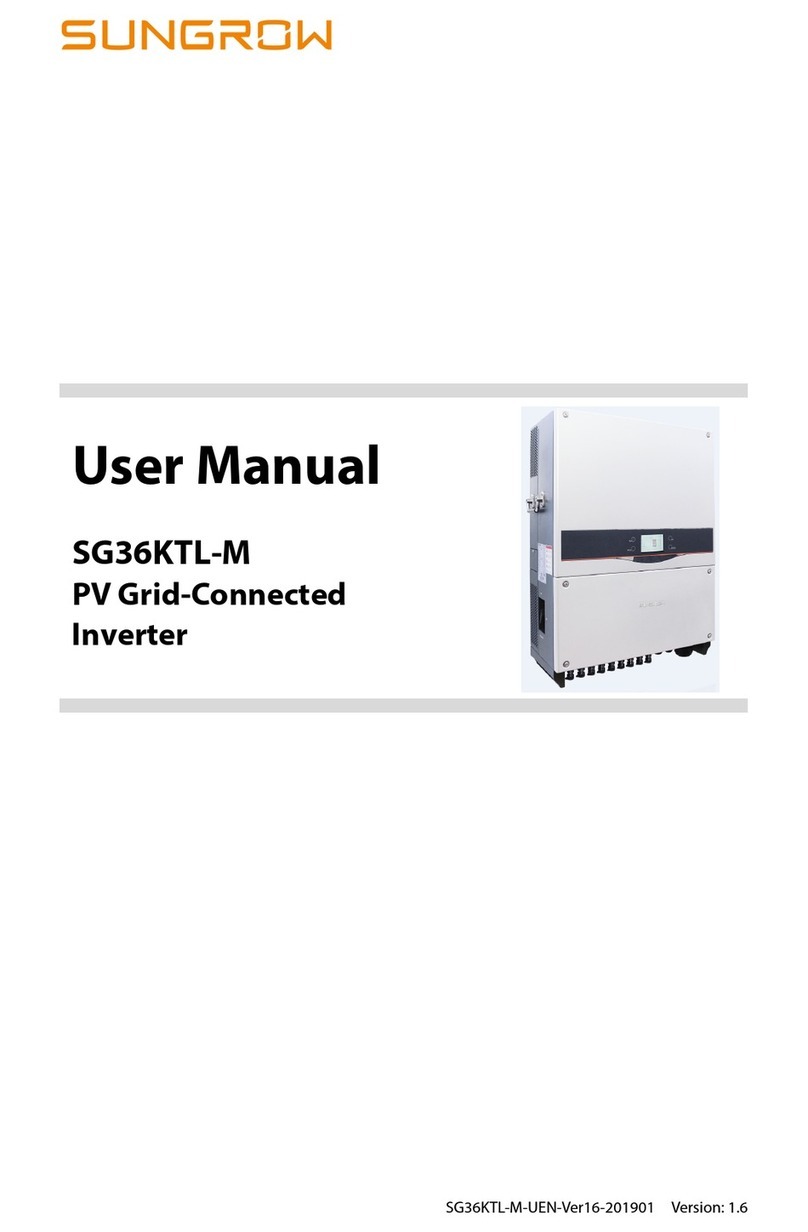
Sungrow
Sungrow SG36KTL-M user manual

Haier
Haier AS50XCAHRA Service manual
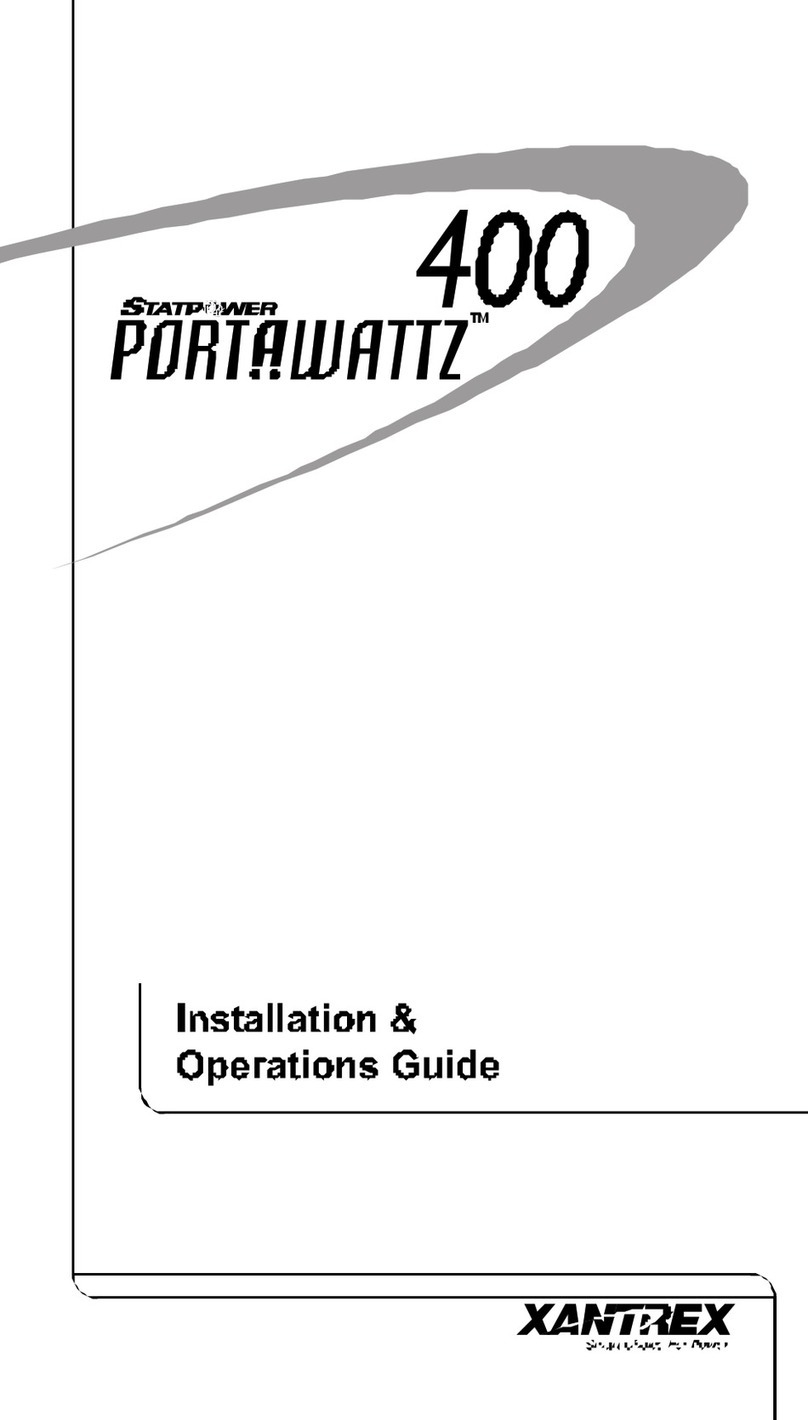
Statpower
Statpower Portawattz 400 Installation & operation guide
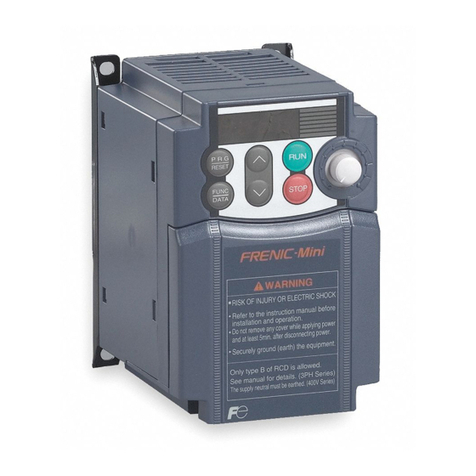
Fuji Electric
Fuji Electric FRN0001C2S-2AFRN0002C2S-2AFRN0004C2S-2AFRN0006C2S-2AFRN0010C2S-2AFRN0012C2S-2AFRN0020C2S-2AFRN0025C2S-2AFRN0033C2S-2AFR instruction manual
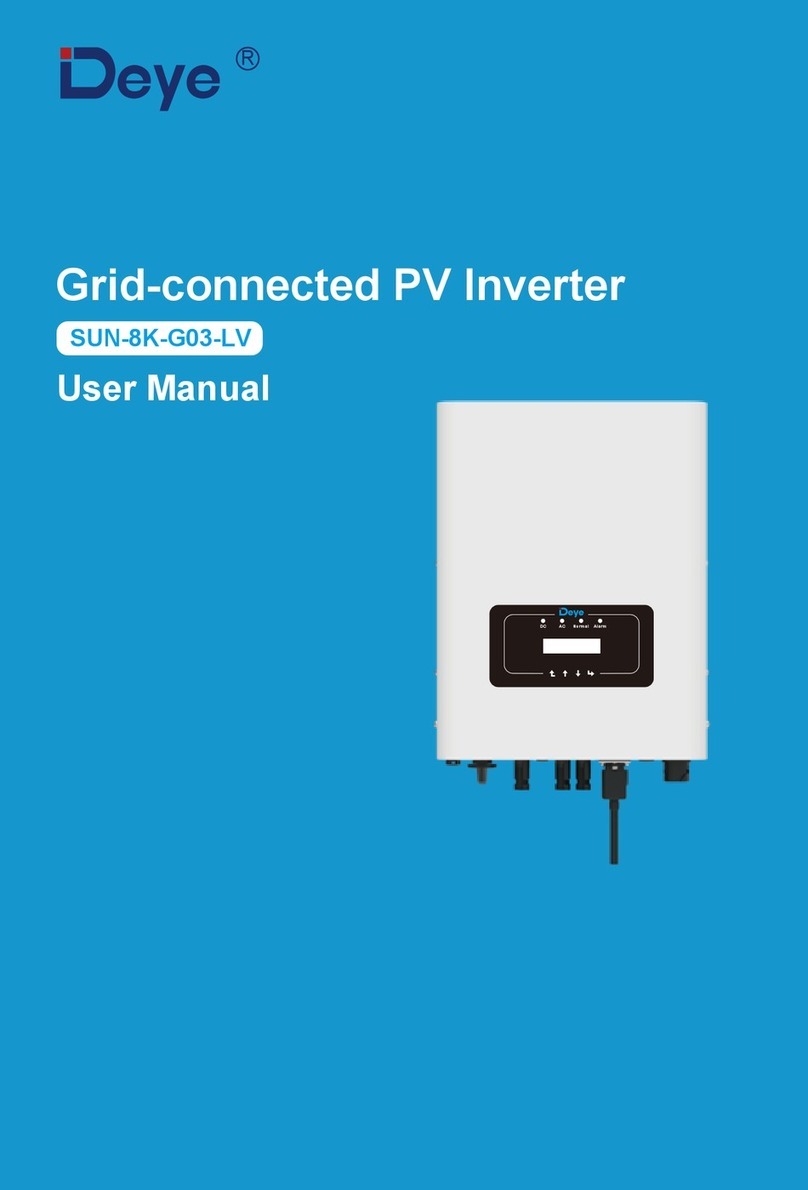
Deye
Deye SUN-8K-G03-LV user manual

